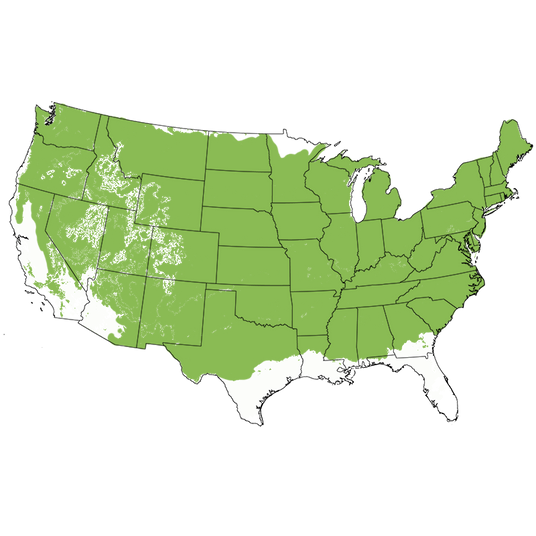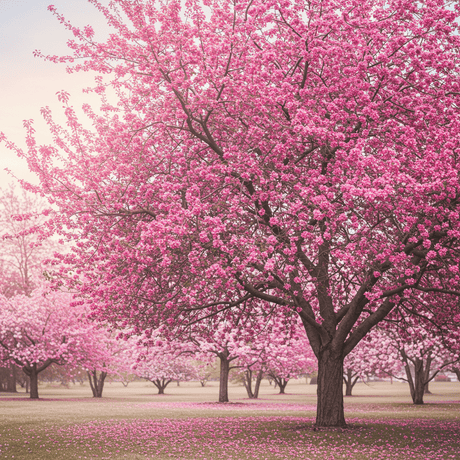Shagbark Hickory Tree
Carya ovata
- Stay Protected with Plant Sentry ™
Shagbark Hickory Tree - #3 Container is backordered and will ship as soon as it is back in stock.
Plant Sentry™
Plant Sentry™

Plant Sentry™ Protected
Your order is protected by our compliance system that:
- Prevents restricted plants from shipping to your state
- Ensures plants meet your state's agricultural requirements
- Protects gardens from invasive pests and diseases
Delivery and Shipping
Delivery and Shipping
Delivery and Shipping
Fast, Safe Plant Delivery
Ships in 3-4 business days • Tracking provided • Weather protected
| Under $50 | $9.99 |
| $50 - $99.99 | $14.99 |
| $100 - $149.99 | $16.99 |
| $150 - $198.99 | $24.99 |
| $199+ | FREE |
✓ Zone-specific timing • ✓ Professional packaging • ✓ Health guarantee
Understanding Plant Options
Nature Hills offers plants in two main formats:
- Container Plants: Grown in pots with soil, sized by container volume and plant age
- Bare Root Plants: Dormant plants without soil, sized by height measurements
Container Plant Sizes
Container sizes indicate plant age and growing capacity rather than liquid volume equivalents. Our containers follow industry-standard nursery "trade gallon" specifications, which differ from standard liquid gallon measurements.
Young Plants (6 months to 18 months old)
| Container Size | Actual Volume | Metric Equivalent |
|---|---|---|
| 2" x 2" x 3" | 0.18 - 0.21 dry quarts | 0.20 - 0.23 dry liters |
| 4" Container | 0.31 - 0.87 dry quarts | 0.35 - 0.96 dry liters |
| 4.5" Container | 0.65 dry quarts | 0.72 dry liters |
| 6" Container | 1.4 dry quarts | 1.59 dry liters |
| 1 Quart | 1 dry quart | 1.1 dry liters |
| 5.5" Container | 1.89 dry quarts | 2.08 dry liters |
Established Plants (18 months to 2.5 years old)
| Container Size | Actual Volume | Metric Equivalent |
|---|---|---|
| 2 Quart | 2 dry quarts | 2.2 dry liters |
| #1 Container | 2.26 - 3.73 dry quarts | 2.49 - 4.11 dry liters |
| 5" x 5" x 12" | 3.5 - 4.3 dry quarts | 3.85 - 4.74 dry liters |
Mature Plants (2-4 years old)
| Container Size | Actual Volume | Metric Equivalent |
|---|---|---|
| #2 Container | 1.19 - 1.76 dry gallons | 5.24 - 7.75 dry liters |
| #3 Container | 2.15 - 2.76 dry gallons | 8.14 - 12.16 dry liters |
Large Plants (3-5 years old)
| Container Size | Actual Volume | Metric Equivalent |
|---|---|---|
| #5 Container | 2.92 - 4.62 dry gallons | 12.86 - 20.35 dry liters |
| #6 Container | 5.25 - 6.01 dry gallons | 23.12 - 26.42 dry liters |
| #7 Container | 5.98 - 6.53 dry gallons | 26.34 - 28.76 dry liters |
Bare Root Plants
Bare root plants are sold by height from the root system to the top of the plant. Plants may exceed minimum height requirements.
Common Sizes:
- Trees: 1 foot, 2 feet, 3 feet, 4 feet, 5 feet, 6 feet
- Shrubs & Perennials: 1 foot, 18 inches, 2 feet
Important Notes
Container Volume Specifications
- Trade Gallon Standard: Our containers follow industry-standard "trade gallon" specifications established by the American National Standards Institute (ANSI Z60.1) for nursery stock
- Volume Variations: Actual soil volume may vary due to plant root systems and growing medium settlement
- Age Indicators: Container size primarily indicates plant age and maturity rather than liquid volume equivalents
Growing Conditions
- Plant size can vary based on variety and growing conditions
- Container size helps indicate plant maturity and establishment level
- Larger containers generally mean more established root systems and faster landscape establishment
Seasonal Availability
- Bare root plants are available seasonally when dormant
- Container plants are available throughout the growing season
- Specific varieties may have limited availability in certain sizes
Questions?
For questions about specific plant sizes or availability, please contact our plant experts who can help you choose the right size for your landscape needs.
Plant Highlights
Shagbark Hickory Tree highlights at a glance!
-
Botanical Name
-
Brand
-
Growing Zones4, 5, 6, 7, 8
-
Growth RateSlow
-
Mature Height
-
Mature Width
-
Leaf Color
-
Flower Color
-
Fall Color
-
Pollinator FriendlyYes
-
Bloom PeriodEarly Spring, Late Spring
-
Does Not Ship To
Characteristics
Where To Plant
When To Prune
- Late Winter
Water & Moisture Needs
- Moderate
Sunlight Needs
Soil Needs
- Well Drained

Growing Zones
Incredible Texture, Edible Nuts Shagbark Hickory
- Very Useful Shade Tree
- Fascinating "Shaggy" Bark
- Attractive, Open Canopy
- Oversized Pinnate Compound Leaves Look Tropical
- Foliage Emerges Rose-Pink in Spring
- Brilliant Gold Fall Color
- Mature Tree Produces Sweet, Edible Nuts
- Largest of the Hickory Nuts
- Native to North America
- Long-Lived Wildlife Tree & Important Ecosystem Tree
- Valuable Timber & Adds Hickory Flavor While Smoking Meat
In need of shade? We offer many amazing choices, but one native legacy tree delivers a fresh, modern look and supports our precious local ecology.
It's also a native that is incredibly easy-care!
Stand out with the fun, funky texture of the Shagbark Hickory Tree (Carya ovata) tree. As your tree matures, you'll cherish the look of the distinctive bark that peels in long strips up and away from the trunk.
Use this tree for shade, and to provide a fabulous focal point you can be proud of. These valuable native trees live for centuries!
Over time, the trunk develops straight and tall, and the canopy develops into a showy, architectural feature. Lower branches droop romantically; while middle branches are held horizontally and the upper set of branches remain upright.
Its bold-textured branch structure and thick twigs give it a striking appearance in winter. This winter interest is complemented by the incredible narrow-plated exfoliating bark.
A mature Shagbark Hickory Tree is a magnificent sight. Huge, compound leaves rustle majestically in the breeze, and lend a wonderfully tropical air to the tree.
In spring, you'll be excited to welcome them back again. New leaves emerge a light rose-pink and age to green for summer.
They are easy to clean up in the fall, too! As the nights grow cooler, the foliage develops a very welcome golden color that gleams in the sun.
Once the tree reaches about 40 years of age, it will start to produce edible nuts in periodic mast years. The thick husks split along their ribs and a large, sweet nut can be enjoyed by both people and local wildlife.
Hickory wood is hard, heavy, strong, and very flexible, and has been traditionally used for high-force applications like tool handles and baseball bats. It's also excellent firewood, with a high value of BTU.
This special tree is an admirable choice. You'll be gifting the world, and getting wonderful shade in return.
Our tree experts love these trees. Order Shagbark Hickory from Nature Hills today!
How to Use Shagbark Hickory in the Landscape
First, decide on your favorite nickname for your young tree. Shagbark hickory trees are also called Shellbark, Bigleaf Shagbark, Kingnut, Big Shellbark, Bottom Shellbark, Thick Shellbark, and Western Shellbark.
This tree can be used even on smaller modern lots. Please give it plenty of room to reach its mature height and spread listed on the Plant Highlights.
Plant one on the south or southwestern of your property. Relish the refreshing shade and lower your air conditioning costs.
We like easy landscaping, don't you? You'll never worry about litter if you create a mulched planting bed to feature your Shagbark.
Place your entertainment area 20 feet away from the tree on the north side. Rest and recharge in its cool shade with family and friends.
On a larger property, pair with Oak trees to create a slice of natural North American forest on your property. Manage it as either a food forest or timber stand for long-term income.
These trees are an investment with sweet nuts that are large, edible, and delicious. Both people and wildlife can enjoy them.
As with other edible nuts, squirrels compete with humans for this fruit. You'll typically have a mast year periodically, so make the most of it!
#ProPlantTips for Care
In the wild, Shagbark Hickory can be found in both wet and dry areas but prefers well-drained soils. It needs full sun with at least six hours of direct sunlight a day.
Create a raised mound for planting, if you have soggy soil. Bring in additional soil at least 18 inches high by three feet wide, and plant in that mound.
Nature Hills Root Booster will optimize growth with valuable mycorrhizal fungus and other time-tested ingredients. Follow the instructions on the packet while planting to support the tiny feeder roots' ability to access nutrients and water. It never "wears out", but helps the tree over its whole life span.
Give trees a consistent amount of medium water. This "ounce of prevention" keeps your tree stress-free, improving their health and resistance to pests and disease.
Prune in late winter. Don't grind any pruned limbs, cut them for excellent firewood. Use a few chips while smoking meat for that outstanding Hickory flavor!
Sure, you'll have an interesting tree that shades you and your crew in the height of summertime. But with Shagbark Hickory Nut Tree ...you'll also become a positive force for conserving our natural resources. Feel good about this thoughtful choice. Order a Shagbark Hickory Tree today!








